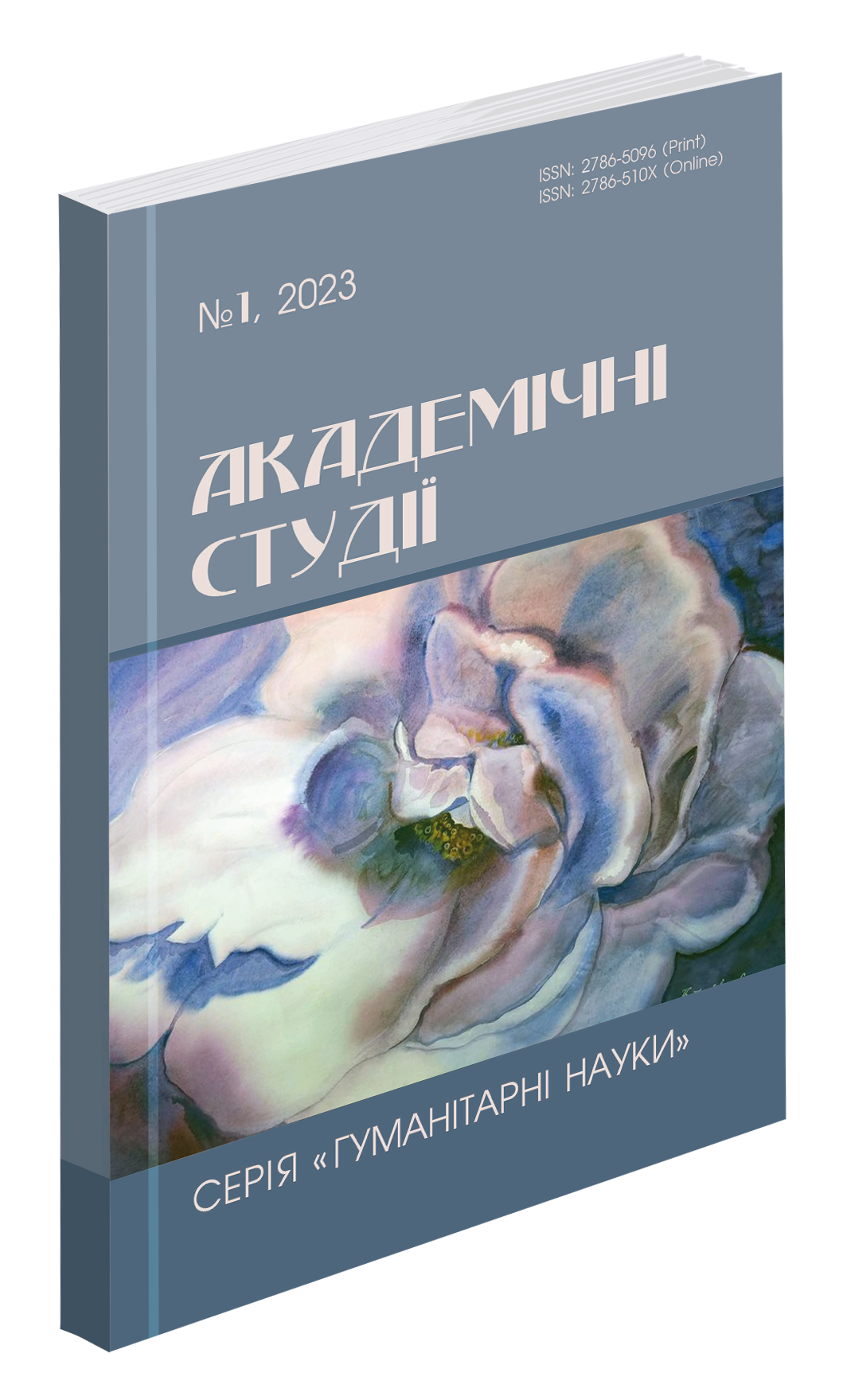Abstract
The study analyzes the children's stories of Volodymyr Vinnichenko, a Ukrainian author of the first half of the 20th century. He dedicated the collection of short stories "The Necklace" to works for young readers. In it, almost for the first time, he focused the main attention on the psychological state of the characters, their inner world, which is why researchers call it innovative. It was established that in the works analyzed by us, the author actively used folklore motifs, genres and images. This allowed him to explain to readers some of the folk traditions of our ancestors, to show the inextricability of the connection between the past and the present, to reproduce the flavor of the era he was describing. It was determined that Ukrainian culture is characterized by beliefs in the existence of supernatural beings – witches, devils, devils, mermaids, witches, sorcerers, werewolves, who can help or harm people. Vynnychenko borrows from folklore the image of a homemaker and a forester. An in-depth analysis of these images at the level of mythology, folklore and literature was carried out and attention was drawn to the fact that the latter (woodsman/Korchun) underwent the greatest literary transformation in the story. Parallels with typologically related images in world culture are drawn. The role of fairy-tale therapy is noted. The functions of folklore elements in the works are clarified: the composition of stories is built around them, the characteristics of the main characters are manifested through the relation to folklore images, and the ideological and aesthetic concepts of the author are brought to life. And in stressful situations associated with their appearance, the consciousness of a small individual is formed. In his works, Vynnychenko sends important messages to all parents: our children do not need hypercare, they want and can be independent. They need understanding and education from us. Not the last role in the formation of a child's life position is played by folk art. It does not matter whether in its "pure form" or in a literary interpretation. The main thing is that it contains the main life instructions: about good and evil, ethics and morality, values and ideals, without which it is very difficult in the modern world.
References
Брандес В., Вознюк О., Заброцький М. Казка як важливий чинник розвитку людства. Видання Житомирського державного університету ім. І. Франка, 2001. № 8. 96–100.
Варданян М. Україна на роздоріжжі: еміграційний цикл повістей «Намисто» В. Винниченка в контексті радянської дитячої літератури 20-х рр. ХХ ст. Науковий збірник Миколаївського національного університету імені В. Сухомлинського, 2017. № 2(20). 47–51.
Винниченко В. Намисто : оповідання. Київ : Веселка, 1989.
Виноградова Л. Народна демонологія та міфо-обрядова традиція слов'ян. Москва : Індрік, 2000.
Вовк О. Емоційний потенціал дитячих оповідань Володимира Винниченка. Літературознавство. Актуальні проблеми гуманітарних наук, 2015. № 2, 193–198.
Володимир Винниченко: viribus unitis – ХХІ. Частина перша (Життя і творчість В. Винниченка в наукових дослідженнях С. Михиди та М. Ковалик). Кіровоград : «Поліграф-Сервіс», 2013. 432 с.
Давидюк В. Первісна міфологія українського фольклору. Луцьк: Волинська обласна друкарня, 2005.
Марків Р. Теоретичні аспекти фольклоризму в літературі. Періодика Львівського університету. Серія філологічна. 2010. № 41. 215–223.
Потапенко С. Проблема тексту у фольклорі з точки зору теорії інтертекстуальності. Літературознавство, 2010. № 26. 455–459.
Присяжнюк С. Дитяча проза В. Вунченка: рівень наукової інтерпретації. Наукові записки Кіровоградського державного педагогічного університету імені В. Винниченка, 2005. № 61. 237–245.
Франко І. Зібрання творів: у 50 томах. Т. 41. Київ : Наукова думка, 1984.
Чепурко О. Образи дітей в українській малій прозі кінця ХІХ – початку ХХ ст. Видання Житомирського державного університету імені І. Франка, 2004. № 15. 215–218.

